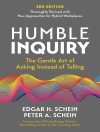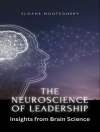This book reconstructs the emergence of the phenomenon of “lost time” by engaging with two of the most significant time experts of the nineteenth century: the German physiologist Hermann von Helmholtz and the French writer Marcel Proust.
Its starting point is the archival discovery of curve images that Helmholtz produced in the context of pathbreaking experiments on the temporality of the nervous system in 1851. With a “frog drawing machine, ” Helmholtz established the temporal gap between stimulus and response that has remained a core issue in debates between neuroscientists and philosophers.
When naming the recorded phenomena, Helmholtz introduced the term temps perdu, or lost time. Proust had excellent contacts with the biomedical world of late-nineteenth-century Paris, and he was familiar with this term and physiological tracing technologies behind it. Drawing on the machine philosophy of Deleuze, Schmidgen highlights the resemblance between the machinic assemblages and rhizomatic networks within which Helmholtz and Proust pursued their respective projects.
Sobre el autor
Henning Schmidgen (Author)
Henning Schmidgen is Professor of Media Studies at the Bauhaus University in Weimar, Germany.
Nils F. Schott (Translator)
Nils F. Schott is the James M. Motley Postdoctoral Fellow in the Humanities at Johns Hopkins University. The author of The Conversion of Knowledge, he is the co-editor, with Hent de Vries, of Love and Forgiveness for a More Just World (Columbia University Press, 2015) as well as translator and co-editor, with Alexandre Lefebvre, of Vladimir Jankélévitch’s Henri Bergson.












